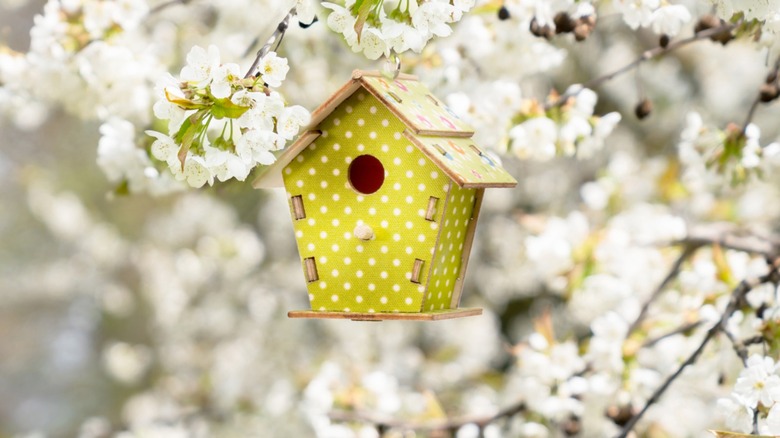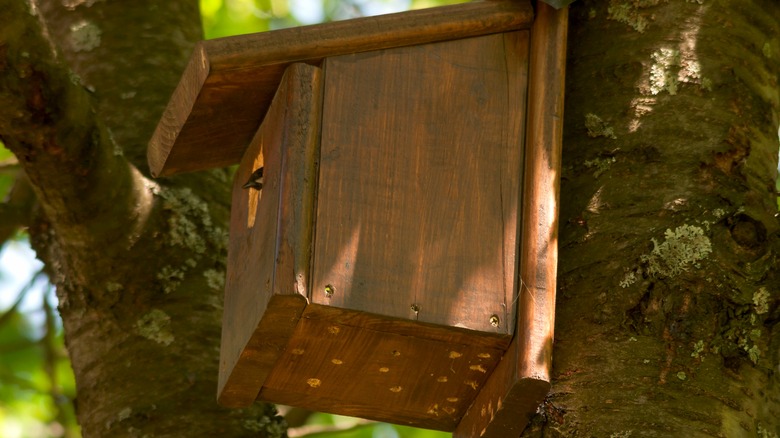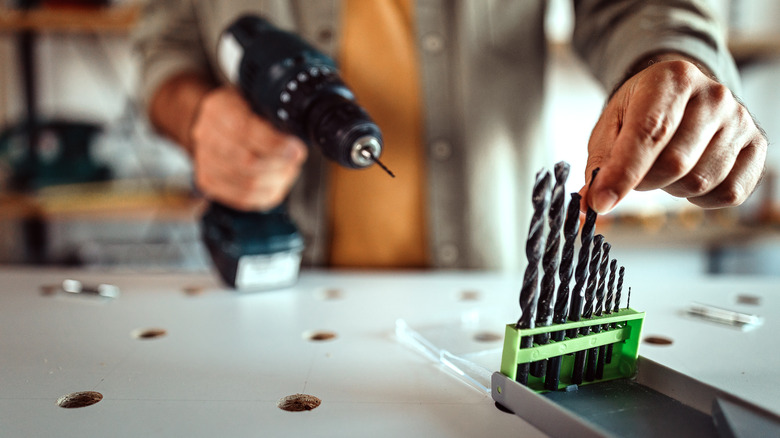How Your DIY Birdhouse Could Be Deterring Feathered Friends From Your Yard
If you love birdwatching, then chances are you have tried your hand at making a DIY birdhouse. It's a great way to attract neighborhood birds into your yard, allowing you to watch them pop in and out from the comfort of your porch or kitchen window. It's also extra special to make one rather than buy one, since it not only allows you to create a house specific to your vision but also to connect with the birds since you made their small shelter with your own hands.
However, if you don't have as many avian visitors as you thought you would, your birdhouse could be deterring them for one specific reason: it's retaining water since there are no drainage holes on the bottom. Much like how you wouldn't want to sit on a couch in a flooded living room, birds don't want to sit in a soggy nest. It's uncomfortable, and they will quickly hop out to look for more stable shelter. Let's take a deeper look into why drainage holes are so important.
Why you need drainage holes in your DIY birdhouse
Every birdhouse needs at least four drainage holes in order to properly keep moisture at bay. These cavities don't have to be big — ¼-inch holes will suffice. Their addition is important for a couple of reasons. First, it ensures any rainwater that gets in has a reliable way to escape. This is important, especially if a bird chooses your house as a nest for its hatchlings. Drainage holes ensure the baby birds won't drown, which would be a major cause for concern for the mother bird. That's why if a bird hops into the house and notices puddles of water, it will most likely leave and never come back. It will see your birdhouse as unsafe and look for more reliable shelter.
Second, the drainage holes prevent mildew or mold from taking root. Since your birdhouse is made from wood, allowing standing water to sit at the bottom can encourage spores to form at worst or the wood to rot at best. Either way, it won't make for an attractive spot to nest. Birds are pretty picky about where they decide to call home, so having a soggy, unsafe structure won't cut it for them.
How to add drainage holes into your bird house
If you forgot to add drainage holes to your structure, you don't have to throw it out and start all over. Instead, take down the birdhouse and grab your power drill and a ¼-inch drill bit. Simply flip the house on its side, hold it steady with one hand, and use the drill bit to create four holes about an inch from each corner. You can also add one hole to the middle if you want to be extra cautious. This will suffice to allow any trapped water to exit the house.
If you forgot to add drainage holes, chances are you might have also failed to add ventilation holes. Use a ⅝-inch drill bit to add two ventilation holes near the top of the sides. This will allow fresh air to enter the structure and any trapped heat to exit, creating safer living conditions for the birds. Just make sure not to drill the ventilation holes into the roof itself, or rainwater will more easily get in. Once you solve these issues, birds should no longer avoid your birdhouse.


